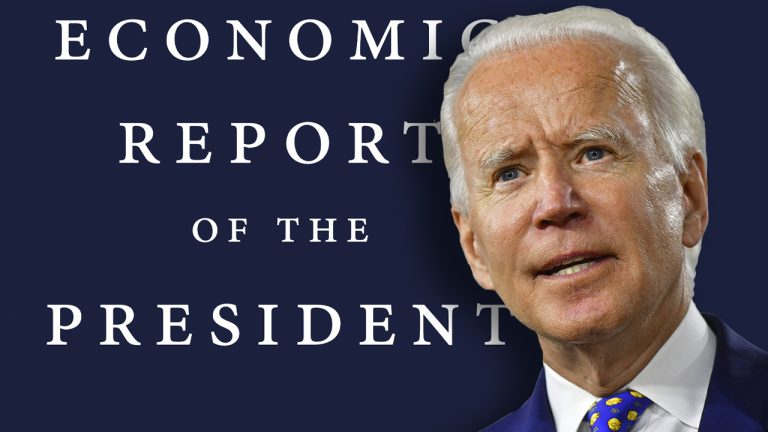
SEC actions have made developers fearful that their code may end in prosecution. Are smart contracts with immutable code the way to protect themselves?
On April 10, Uniswap Labs received a Wells notice — a letter informing a company or individual that the United States Securities and Exchange Commission is planning to bring an enforcement action against them.
Uniswap Labs is the eponymous developer of the software on which Uniswap — a widely used decentralized cryptocurrency exchange (DEX) — facilitates trading.
The Wells notice follows a reported SEC investigation in which it was allegedly seeking information about Uniswap’s marketing and investor services.

With AI-generated content continuing to evolve, the advent of data-poisoning tools capable of shielding an artist’s works from AI could be a game changer.
As the use of artificial intelligence (AI) has permeated the creative media space — especially art and design — the definition of intellectual property (IP) seems to be evolving in real time as it becomes increasingly difficult to understand what constitutes plagiarism.
Over the past year, AI-driven art platforms have pushed the limits of IP rights by utilizing extensive data sets for training, often without the explicit permission of the artists who crafted the original works.
For instance, platforms like OpenAI’s DALL-E and Midjourney’s service offer subscription models, indirectly monetizing the copyrighted material that constitutes their training data sets.

The social engineering attacks trick community members into downloading a malicious ZIP archive named ‘Cross-platform Bridges.zip’ — imitating an arbitrage bot designed for automated profit generation.
A new malware discovered on Apple’s macOS — tied to the North Korean hacking group Lazarus — has reportedly targeted blockchain engineers of a cryptocurrency exchange platform.
The macOS malware “KandyKorn” is a stealthy backdoor capable of data retrieval, directory listing, file upload/download, secure deletion, process termination, and command execution, according to an analysis by Elastic Security Labs.

The above flowchart explains the steps taken by the malware to infect and hijack users’ computers. Initially, the attackers spread Python-based modules via Discord channels by impersonating members of the community.
The social engineering attacks trick community members into downloading a malicious ZIP archive named ‘Cross-platform Bridges.zip’ — imitating an arbitrage bot designed for automated profit generation. However, the file imports 13 malicious modules that work together to steal and manipulate information. The report read:
“We observed the threat actor adopting a technique we have not previously seen them use to achieve persistence on macOS, known as execution flow hijacking.”
The cryptocurrency sector remains a primary target for Lazarus, primarily motivated by financial gain rather than espionage, their other main operational focus.
The existence of KandyKorn underscores that macOS is well within Lazarus’ targeting range, showcasing the threat group’s remarkable ability to craft sophisticated and inconspicuous malware tailored for Apple computers.
Related: Onyx Protocol exploiter begins siphoning $2.1M loot on Tornado Cash
A recent exploit on Unibot, a popular Telegram bot used to snipe trades on the decentralized exchange Uniswap, crashed the token's price by 40% in one hour.
.@TeamUnibot seems exploited, the exploiter transfers memecooins from #unibot users and is exchanging them for the $ETH right now.
— Scopescan ( . ) (@0xScopescan) October 31, 2023
The current exploit size is ~$560K
Exploiter address:https://t.co/ysyTmgUAit pic.twitter.com/MF85Fdk892
Blockchain analytics firm Scopescan alerted Unibot users about an ongoing hack, which was later confirmed by an official source:
“We experienced a token approval exploit from our new router and have paused our router to contain the issue.”
Unibot committed to compensating all users who lost funds due to the contract exploit.
Magazine: Slumdog billionaire 2: ‘Top 10… brings no satisfaction’ says Polygon’s Sandeep Nailwal

Jaynti Kanani said he had stepped back “from the day-to-day grind” at Polygon roughly six months ago.
Jaynti Kanani, the co-founder of Polygon, announced that he has stepped back “from the day-to-day grind” on the project for the first time in six years.
In an Oct. 4 X (formerly Twitter) thread, Kanani said he planned to focus “on new adventures” while contributing to Polygon “from the sidelines”. He, along with software engineers including Sandeep Nailwal, Anurag Arjun, and Mihailo Bjelic helped found the Matic network in 2017, which was later rebranded to Polygon.
“Man this makes me emotional,” said Nailwal in response to the announcement. “What a ride we've had together brother. But its just the start for Polygon, i wish we could've done more for longer together in this crazy journey that is Polygon. But hey, you got to do what you got to do.”
After kickstarting Polygon in 2017, around 6 months back, I decided to step back from the day-to-day grind.
— Jaynti Kanani (JD) (@jdkanani) October 4, 2023
I'm more confident in Polygon's bright future and passionate community. I'll be focusing on new adventures while still cheering and contributing to Polygon from the…
Related: Polygon co-founder: $1B bet on ZK-rollups paying off
Polygon’s website listed 10 co-founders of the protocol, some of whom are still involved in various side projects on the platform. Arjun departed Polygon in March with the spin-off of blockchain data availability protocol Avail.
Polygon Labs has begun accepting improvement proposals aimed at transitioning the network to Polygon 2.0 since plans were announced in June. The new ecosystem will use zero-knowledge proofs and be made up of four protocol layers focused on staking, interop, execution and proving. At the time of publication, developers were still working on “bringing Polygon 2.0 to life”.
Magazine: ZK-rollups are ‘the endgame’ for scaling blockchains: Polygon Miden founder

Stablecoin operator Tether is building specialized Bitcoin mining software aimed at using data analytics to optimize mining operations and boost production, CTO Paolo Ardoino says.
Stablecoin issuer Tether (USDT) is building specialized software to optimize Bitcoin mining and renewable energy operating using data analytics, following recent investment endeavors into both categories.
In conversation with Cointelegraph, Tether CTO Paolo Ardoino expanded upon details of its in-development mining software which aims to deliver improved analytics and performance of mining sites.
Related: Tether’s game plan in El Salvador: Why invest in Volcano Energy?
Moria, named after the dwarven mining kingdom from The Lord of the Rings trilogy, is being built by Ardoino and a team of developers. Tether's CTO had previously shared details of the software in a recent social media post.
Tether is investing in renewable energy production (with excess reserves / profits) and sustainable #bitcoin mining.
— Paolo Ardoino (@paoloardoino) August 15, 2023
While there are ton of cloud-based bitcoin mining trackers, everything I've seen so far is not really customizable and lacks of deep-level orchestration…
Ardoino says that while the ecosystem has a number of cloud-based Bitcoin mining trackers, these lack a high degree of customizability and “deep-level orchestration capabilities” which has left a gap in the market for a solution that analyzes real-time data to optimize mining and energy outputs.
“So far most software that mining companies use are basic cloud solutions that have a simplified interface that provides an overview of the current status of the bitcoin mining site.”
Ardoino said that having access to deep data sources of an energy production site or a mining site requires complex and efficient analytical tools in order to understand the performance of a site and its surrounding environment.
“If energy used by the mining site is wind or solar, there are optimization parameters, like predicted speed of wind for a specific day or a specific hour of the day, that could be used to overclock some of the miners and boost the production.”
Tether has been actively investing in energy production and Bitcoin mining using a portion of excess reserves of USDT. Ardoino said that ensuring data produced by a variety of devices including miners, containers and electric transformers is recorded, monitored and analyzed in real time is imperative to streamlining operations.
His recent X post extrapolated the value to be derived from a Bitcoin mining site made up of thousands of physical mining units stored in multiple containers connected to thousands more devices. The Tether CTO likened a mining site to an IoT project that produces millions of data points.
Ardoino added that the development focus of Moria is currently on its Bitcoin analytical tools, before the software is extended to cover energy production.
“There as well you have solar panels, wind mills etc that provide an incredible amount of information.”
Ardoino describes Moria’s software as a Holepunch-based scalable and modular architecture that is able to collect, aggregate and analyze data from a variety of devices to optimize Bitcoin mining.
Tether recently announced that it would invest $1 billion into El Salvador's Volcano Energy project, directing shareholder profits into energy infrastructure and Bitcoin mining operations. In another extensive interview with Cointelegraph, Ardoino outlined Tether’s reasoning behind the move.
Magazine: ‘Elegant and ass-backward’: Jameson Lopp’s first impression of Bitcoin

Ordinals have been a controversial topic within the Bitcoin community but crypto investment firm Grayscale says there’s two main reasons to be optimistic.
Bitcoin (BTC) Ordinals — also known by some as Bitcoin NFTs — could renew developer enthusiasm for Bitcoin and boost mining fees, according to cryptocurrency investment firm Grayscale.
In an April 27 “Market Byte” blog post, the firm suggested that Ordinals provide two key benefits to the growth and development of the Bitcoin ecosystem.
#Ordinals have generated a great deal of attention in the crypto ecosystem by introducing #NFT-like assets on the #Bitcoin blockchain. @mzhao8 and our research team explore their potential in our latest Market Byte:
— Grayscale (@Grayscale) April 28, 2023
https://t.co/7muc9Lyrok
The first is a substantial increase in fees paid to miners, which has been seen since the launch of the protocol in January, according to Grayscale.
“The advent of ordinals has led to an increase in total fees paid to miners [...] which could potentially establish a sustainable baseline level of transaction fees to incentivize miners.”
Grayscale argued that this would ensure "continued network security throughout the lifetime of the Bitcoin network.”
As reported by Cointelegraph, in less than two months after its launch, more than $600,000 was paid to Bitcoin miners, solely as the result of fees generated by Ordinal inscriptions. As of the time of publication, that figure now exceeds the $6.5 million mark.

The investment firm also believes that Ordinals and the “velocity of NFT adoption” could also attract new Bitcoin users and spark more development on the Bitcoin network.
"We believe the emergence of ordinals is likely to promote a development-oriented community and culture in support of the Bitcoin network."
On April 30, Ordinals reached a new record, with the number of daily inscriptions topping 300,000.
Around the same time, the number of Bitcoin transactions neared peaks not seen in a number of years, according to blockchain data firm IntoTheBlock.
Related: Magic Eden launches marketplace for Bitcoin Ordinals
The meteoric rise of Ordinals has been a controversial topic in the wider Bitcoin community, having been extensively criticized by Bitcoin maximalists for straying from the original purpose of Bitcoin as a peer-to-peer electronic currency and clogging up valuable block space.
One such critic is Blockstream CEO Adam Back, who has made a number of comments in which he declared Ordinals to be “useless,” and claimed that he is “more into Bitcoin as a currency.”
"you can't stop them" well ofc! bitcoin is designed to be censor resistant. doesn't stop us mildly commenting on the sheer waste and stupidity of an encoding. at least do something efficient. otherwise it's another proof of consumption of block-space thingy.
— Adam Back (@adam3us) January 29, 2023

After shutting down in 2020 due to financial issues and poor user growth, the decentralized marketplace appears set to rise again.
The decentralized marketplace OpenBazaar appears set for a comeback after it was shut down over two years ago, according to a number of social media and GitHub updates.
A GitHub repository on the collaborative software development site shows progress as recent as April 12 on building a new version of the marketplace which was shut down in 2020.
Brian Hoffman, the former project lead at OpenBazaar and CEO of OB1 — the for-profit company which developed its software — tweeted on April 9 of the progress made on a “new” version of the marketplace saying it is “getting more interesting by the day.”
Hitting 1,000 lines of code on the new @openbazaar repo. This is getting more interesting by the day.
— brian hoffman (@brianchoffman) April 8, 2023
In the replies, Hoffman was asked how the marketplace would be different this timegiven that due to financial issues and poor user growth, OpenBazaar was forced to shut down.
Hoffman replied speaking of “freedom of exploration” and inferred that outside influence had contributed to its initial downfall.
I’m letting it go where it goes. No investor input or outside influences. Freedom of exploration.
— brian hoffman (@brianchoffman) April 9, 2023
The first hints that OpenBazaar would be launching a comeback came in a tweet from Hoffman on March 28, where he linked OpenBazaar’s GitHub page that showed he’d been working on a new version of the marketplace in the programming language Rust.
https://t.co/NrJy7OqKJJ
— brian hoffman (@brianchoffman) March 28, 2023
it's begun... pic.twitter.com/FkOOVNsc8c
Just hours later OpenBazaar’s official account also posted a Tweet, which said “it is now time to grow again from the ashes,” and that “work has begun.”
work has begun. we will need recruits. we will need your ideas, your thoughts.
— OpenBazaar (@openbazaar) March 28, 2023
Adding to the evidence that the marketplace appears likely to relaunch, the OpenBazaar website currently bears the message “openbazaar 3.0 - coming soon.”
Related: 5 programming languages to learn for AI development
After the exchange had shut down in 2020, Hoffman tweeted that a future iteration of OpenBazaar would require more independence from OB1, but provided no more information about how this might work.
The future of @openbazaar will be more independence from @OB1Company. More news on that soon.
— brian hoffman (@brianchoffman) September 28, 2020
OpenBazaar has been hailed as the decentralized eBay alternative and was first launched back in 2014. It allowed users to interact directly with each other to make transactions using Bitcoin (BTC).
The marketplace initially had the name “DarkMarket,” but changed it to OpenBazaar following community input in an attempt to improve its public image.
Cointelegraph contacted Hoffman and OpenBazaar for comment but did not immediately receive a response.
Hodler's Digest, April 2-8: BTC white paper hidden on macOS, Binance loses AUS license and DOGE news
 On April 8, 2023, the number of Ordinal inscriptions surpassed the million mark as the non-fungible token (NFT) trend has seemingly become a mainstay. Presently, on Sunday, April 9, the total number of Ordinal inscriptions is 1,049,263, and so far, 169.85 bitcoins worth $4.7 million have been collected in fees. Ordinal Inscriptions Reach 1 Million […]
On April 8, 2023, the number of Ordinal inscriptions surpassed the million mark as the non-fungible token (NFT) trend has seemingly become a mainstay. Presently, on Sunday, April 9, the total number of Ordinal inscriptions is 1,049,263, and so far, 169.85 bitcoins worth $4.7 million have been collected in fees. Ordinal Inscriptions Reach 1 Million […] According to the P2P Foundation forum, the mysterious creator of Bitcoin, Satoshi Nakamoto, has ostensibly turned 48 today on April 5, 2023. More than 14 years ago, Nakamoto introduced Bitcoin to the forum members, noting that the inventor “developed a new open-source P2P e-cash system called Bitcoin.” The Significance of April 5 in the History […]
According to the P2P Foundation forum, the mysterious creator of Bitcoin, Satoshi Nakamoto, has ostensibly turned 48 today on April 5, 2023. More than 14 years ago, Nakamoto introduced Bitcoin to the forum members, noting that the inventor “developed a new open-source P2P e-cash system called Bitcoin.” The Significance of April 5 in the History […] On Monday, U.S. president Joe Biden published the administration’s economic report and addressed the subject of cryptocurrencies. The section titled “The Perceived Appeal of Crypto Assets” describes the currencies as “mostly speculative investment vehicles” that are “unbacked” and “traded without fundamental anchors.” The White House insists that crypto assets do not deliver on their promises […]
On Monday, U.S. president Joe Biden published the administration’s economic report and addressed the subject of cryptocurrencies. The section titled “The Perceived Appeal of Crypto Assets” describes the currencies as “mostly speculative investment vehicles” that are “unbacked” and “traded without fundamental anchors.” The White House insists that crypto assets do not deliver on their promises […]